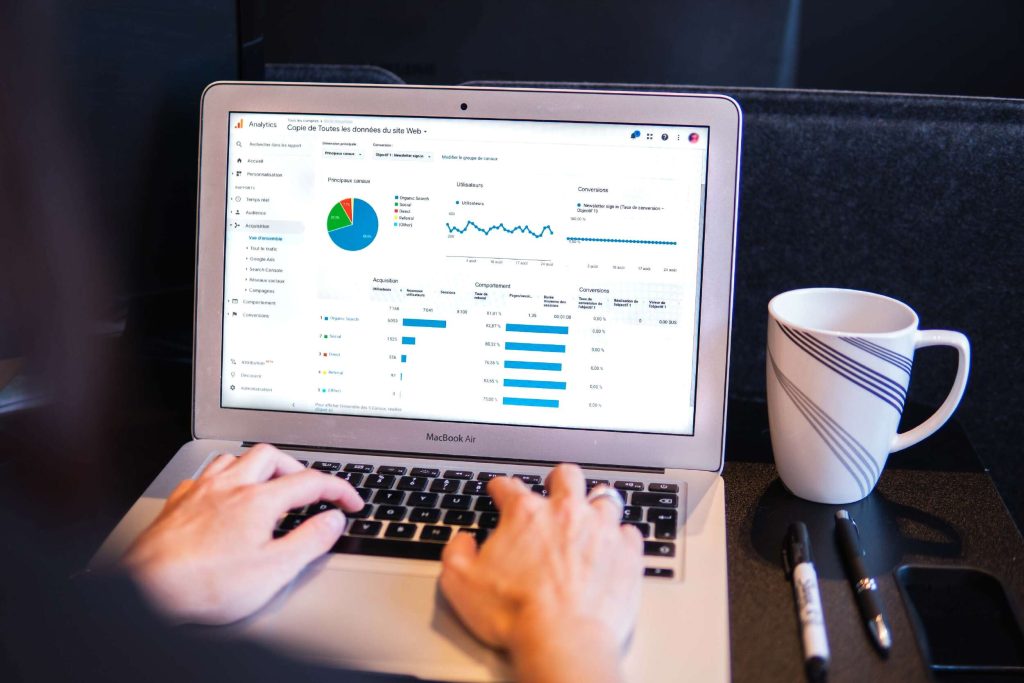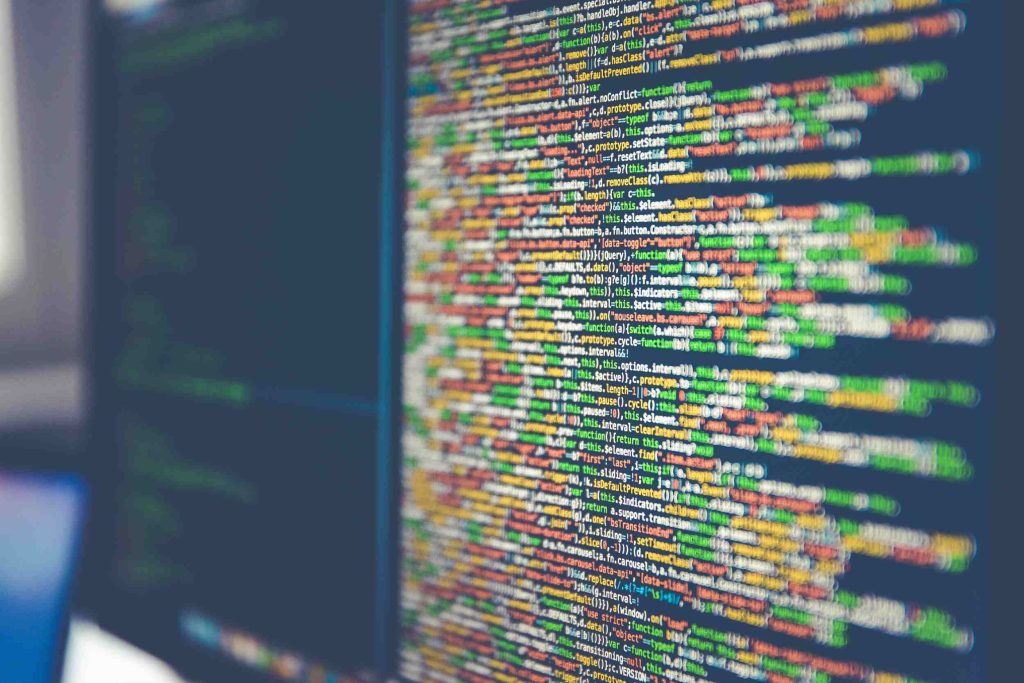Artificial intelligence (AI) is taking the world by storm. With the growing capabilities of AI, when businesses can scale production, minimize human error, increase work speed and productivity, and improve the workload without involving human beings, most business niches see great potential in artificial intelligence these days.
? Read Digital PR Explained: Best Strategies and Tools
According to recent research, the AI software market size reached $138.4 billion, 91.5 % of leading businesses invest in AI, and 42% of companies plan to invest in AI. When it comes to the PR niche, marketers also claim that AI has a strong impact on the way in which people consume and create content.
In this post, we will look at several examples that can teach us how AI will transform the day-to-day work for PR pros.
What Does AI for Public Relations Mean?
AI is already making a significant impact on public relations and generating press releases. A study called Humans Still Needed by the Chartered Institute of Public Relations showed that 38% of a PR’s skills can be either complemented or replaced by AI by 2023. Media monitoring, content creation, and other functions can be automated as AI grabs and understands knowledge much more reliably.

How to Leverage AI in PR?
Why are these trends important for PR?
Through the use of natural language processing (NLP) algorithms, AI can help to analyze large volumes of data from various sources, such as social media, news articles, and other content, to provide insights that can inform PR strategies and tactics.
For instance, AI-powered sentiment analysis can help to identify the overall sentiment towards a brand or topic, while chatbots can be used to improve customer service and the overall user experience. The integration of AI into PR can help organizations gain valuable insights, improve decision-making, and ultimately achieve better results.
Let’s go through different ways AI will transform the game for PR pros.
1. Incorporate data analytics
AI automates the data analysis process to a great extent. This means that AI algorithms can quickly identify patterns, monitor social media trends, and evaluate the effectiveness of PR efforts. In addition, this technology can also be used to identify key influencers and stakeholders, track competitor activity, and measure the success of PR campaigns.
As AI continues to advance, it is expected that the technology will become even more sophisticated in analyzing data and providing insights. By utilizing AI in data analytics, PR professionals can more effectively target their messaging to their audience. They can create more impactful campaigns, and ultimately, achieve better results for their clients.
Read 5 Ways Your Business Can Flourish By Using Social Media Analytics

Synthia for data analysis
Media monitoring platform Determ is jumping on the AI bandwagon. With their new AI assistant Synthia, the system provides a ready-to-use analysis of your mentions and a set of useful tips you can use to better your PR and marketing efforts.
The most significant benefit of Synthia is that it provides a thorough analysis of your mentions in just a couple of clicks. How does it really work? It takes the top 20 mentions by reach in the past seven days as a starting point for the analysis. Based on that, you’ll get a summary of the mentions, an analysis of the sentiment, and the tone of voice.
Let’s say, for example, you work in the PR department of the brand Louis Vuitton. The first part of your analysis provided by Synthia could look something like this:

This can already give you a great idea of what the mentions with the highest reach talk about and can reveal if your desired campaigns got enough attention or not.
Although, it doesn’t stop there.
Synthia aims to give more than just a summary of collected mentions. It provides an overview of the tone of voice, the sentiment, and even provides three key insights. These insights propose what you might do or prepare for based on these finds.

2. Practice personalization
AI is impacting the PR industry in many ways, including the way organizations approach personalization. With the help of AI, PR professionals can now personalize content and messaging to a degree that was previously impossible. AI-powered tools can analyze vast amounts of data on individual consumers. This includes their preferences, interests, and behavior patterns. This information can then be used to tailor messaging to each individual, making it more relevant and engaging.
For example, AI can help PR professionals determine the most effective channels for reaching individual consumers. It can identify the best times to engage with them. And it can even suggest the type of content that is likely to resonate with them. The ability to personalize content in this way can help organizations build stronger relationships with their audience and increase engagement rates. As AI technology continues to advance, it is expected that the level of personalization that can be achieved will only increase.
3. Get more from what you have
AI will also enable PR professionals to get much more out of the resources they have. For example, AI can help PR teams identify which channels and tactics are most effective at reaching their target audience. This will allow them to focus their efforts on the strategies that deliver the best results.
In this context, AI can also help PR professionals decide which stories to pitch to which journalists, increasing the chances of coverage. This will enable the PR professionals to automate routine tasks and get data that would be impossible to obtain manually.
Read Revolutionizing PR: How AI-powered Media Monitoring Can Benefit PR Professionals
4. AI-assisted contact recommendations
With AI-assisted contact recommendations, PR teams will be able to easily identify the most relevant journalists, influencers, and other key contacts to target with their campaigns. AI algorithms can analyze vast amounts of data, including past coverage, social media activity, etc. This can help you identify the best targets for outreach. This saves PR professionals a significant amount of time and effort, enabling them to focus on building relationships with the most promising contacts.
By utilizing AI in this way, PR professionals can increase their chances of securing media coverage, as well as building long-term relationships with key influencers in their industry.

5. Data-driven media relations
AI-powered data analysis helps PR teams monitor and analyze media coverage and identify key trends and opportunities. By tracking key metrics such as audience reach, sentiment analysis, and engagement rates, PR professionals can identify which media outlets and journalists are the most effective at delivering their message to their target audience. This information can then be used to inform future media relations strategies. In addition, AI-powered tools can also help PR professionals identify which types of content are resonating with their target audience. Ultimately, this enables them to create more effective campaigns.
6. Influencer identification
AI will also play a significant role in identifying influencers. With AI-powered influencer identification, PR teams can analyze vast amounts of data on influencers. This includes primarily their reach, engagement rates, and audience demographics. With this information at hand, they can easily identify the most promising leads for collaboration. By utilizing AI-powered outbound lead generation, PR professionals can proactively reach out to potential influencers, increasing the chances of securing successful partnerships.
AI can also assist in the development of personalized outreach strategies, helping PR professionals to tailor their messaging and approach to specific influencers. This level of personalization can help to establish stronger relationships with influencers and increase the chances of successful collaborations.
Read B2B Influencer Marketing: How To Find Top Niche Influencers
7. Journalist content personalization
AI will also be used to fuel journalist content personalization. In this way, PR teams can analyze vast amounts of data on journalists, including their past coverage, interests, and social media activity, and use this information to tailor their pitches and messaging to specific journalists. This level of personalization can help increase the chances of securing media coverage, as journalists are more likely to be interested in content that is relevant to their interests and beats.
AI can also help to identify which types of content are most likely to resonate with specific journalists. Meaning what type of language they prefer, medium, etc. This will ultimately help PR professionals optimize their media relations efforts. It will also increase the chances of successful placements and help build stronger relationships with journalists.

8. Speech-to-text technology
AI has transformed the PR industry in one more way. It has enabled PR professionals to transcribe and analyze speech-to-text data from interviews, podcasts, and other audio sources. With AI-powered speech-to-text technology, PR teams can quickly and accurately transcribe audio content into text. This makes it possible for them to analyze and understand the content in more detail. Ultimately it helps them identify key themes, quotes, and insights that can be used to inform messaging and media outreach strategies.
AI can in this context also be used to analyze sentiment and tone. This allows PR professionals to understand how interviewees or speakers feel about specific topics and issues.
9. Predictive analytics
AI helps PR professionals to use predictive analytics to anticipate trends, monitor sentiment, and identify potential issues before they become problems. With AI-powered predictive analytics, PR teams can analyze vast amounts of data from social media, news, and other sources to identify patterns and predict future outcomes.
This can help PR professionals to anticipate potential issues or opportunities. And adjust their messaging and outreach strategies accordingly. Predictive analytics can also help PR teams to monitor sentiment around specific topics, brands, or individuals, and quickly identify any negative sentiment or potential crises.
10. Video authenticity monitoring
With the rise of deepfake technology, the need for video authenticity monitoring has become increasingly important. AI-powered video authenticity monitoring can help PR teams verify that the videos they create have not been manipulated or altered in any way. This can help to maintain trust and credibility with the audience, ensuring that the videos are seen as authentic and trustworthy.
AI can also help to identify potential deepfake videos that are being shared on social media or other platforms, allowing PR professionals to take action to mitigate any potential harm to their clients or their brand.

11. Natural language generation
AI-powered NLG helps PR teams turn data into written content in a matter of seconds. This is especially useful for creating press releases, reports, and other content more efficiently and effectively. This can help save time and reduce costs associated with manual content creation. But it can also help PR professionals to provide more personalized and targeted content for their audiences.
AI-powered NLG can also be used to create custom reports and insights for clients. These can provide them with actionable insights that can help them to make informed decisions. In this way, PR professionals can optimize their media relations efforts, creating high-quality content quickly and efficiently, and delivering value to their clients.
12. Sentiment analysis
With AI PR professionals can use sentiment analysis to understand how audiences feel about a particular brand or topic. AI-powered sentiment analysis helps PR teams quickly and accurately analyze large volumes of data from social media, news outlets, and other sources to determine the overall sentiment towards their brand or industry. This can help PR professionals identify potential issues before they become major problems. Ultimately, they can adjust their messaging and tactics accordingly.
Additionally, AI-powered sentiment analysis can help PR teams to identify the most effective communication channels and strategies for reaching their target audience.
Read Top 5 Examples of Sentiment Analysis

13. Attribution for earned media
AI also helps PR professionals to use advanced attribution models to measure the impact of earned media coverage. With AI-powered attribution models, PR teams can accurately track and measure the impact of earned media coverage. This refers to website traffic, lead generation, and revenue. Ultimately, it can help PR professionals to better understand the ROI of their media relations efforts.
Additionally, AI-powered attribution models can help PR teams to identify the most effective communication channels and tactics for driving business outcomes. Also, it can help them optimize their media relations efforts accordingly. By leveraging AI in this way, PR professionals can easily demonstrate the value of their work to clients and stakeholders.
14. Crisis management
With the ability to process vast amounts of data in real-time, AI can help PR professionals monitor social media and other online platforms to quickly detect and respond to potential crises before they spiral out of control. Additionally, AI-powered chatbots can provide immediate responses to customers and stakeholders, addressing their concerns and providing information during a crisis. Machine learning algorithms also analyze patterns in customer behavior and sentiment, allowing PR teams to tailor their response strategies accordingly.
Read Four Crisis Management Steps to Take to Stop a Disaster
15. AI media monitoring and analysis
AI-powered media monitoring and analysis is transforming the way organizations track their online presence and reputation. With the help of natural language processing (NLP) algorithms, AI can quickly sift through massive amounts of online content, including news articles, social media posts, and reviews, to identify mentions of a brand or topic.
Sentiment analysis tools can determine whether these mentions are positive, negative, or neutral, and provide insights into customer perceptions and trends. Additionally, AI can track competitor activity and identify emerging trends in the market, giving organizations a competitive edge. With real-time monitoring and analysis, PR and marketing teams can stay on top of their online presence and respond quickly to potential issues or opportunities.
16. Content creation and curation
With the help of natural language processing (NLP) algorithms, AI-powered tools can generate written content in a matter of seconds, freeing up valuable time for PR professionals to focus on other tasks. These tools can also analyze data and generate insights, allowing PR professionals to create targeted, data-driven content that resonates with their audience. Additionally, AI can help curate content from a variety of sources, selecting the most relevant and timely pieces for PR professionals to share with their audience.

Conclusion
The use of artificial intelligence (AI) in public relations (PR) is transforming the way PR professionals approach their work. From media monitoring and analysis to crisis management, and content creation and curation, AI is enabling PR professionals to work smarter and more efficiently than ever before. With the ability to analyze vast amounts of data in real-time, AI-powered tools provide valuable insights into customer behavior and sentiment, allowing PR professionals to make more informed decisions and tailor their strategies accordingly.
As AI technology continues to advance, it’s clear that its impact on the PR industry will only continue to grow, enabling PR professionals to stay ahead of the curve in the fast-paced and ever-changing digital landscape. As such, it’s crucial for PR professionals to embrace AI technology and learn how to leverage its capabilities to drive success for their organizations.
George is a blogger at Kamayobloggers.com, a site he started to share cutting-edge marketing insights.






